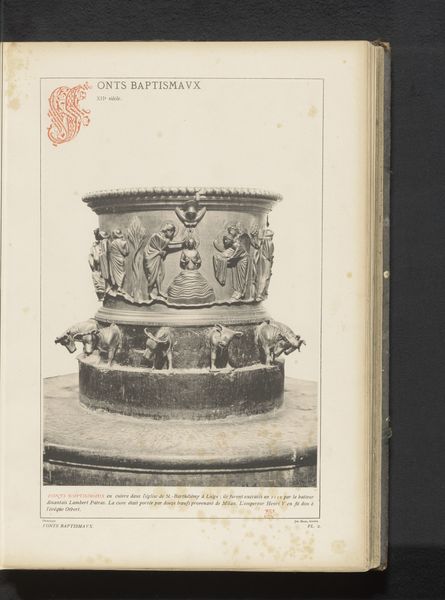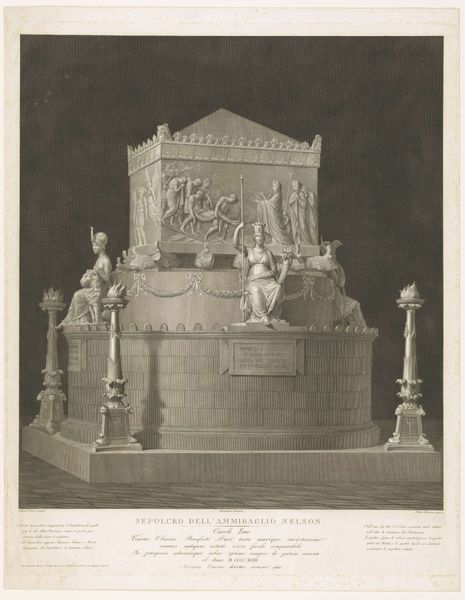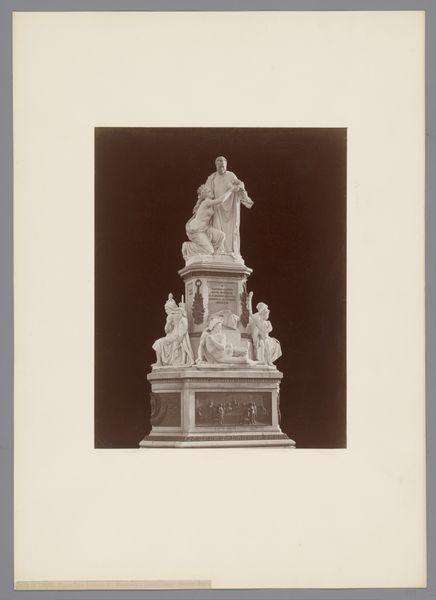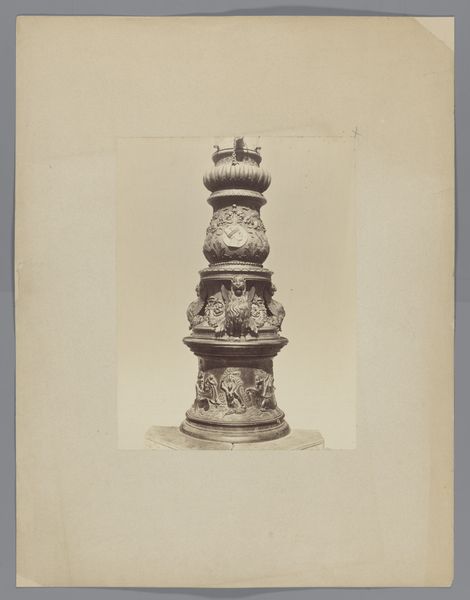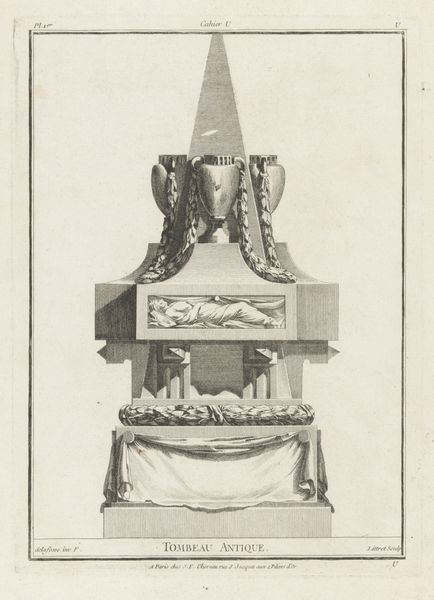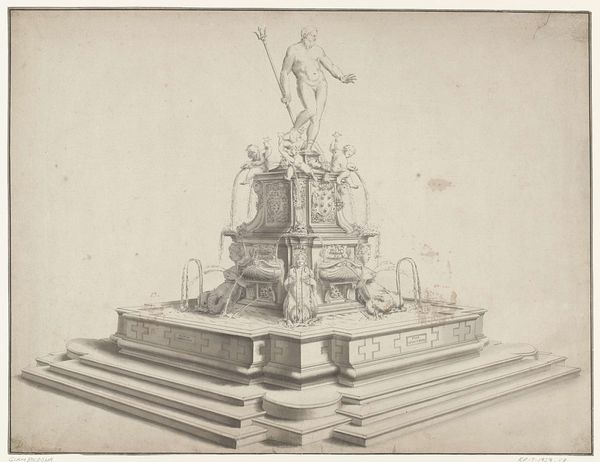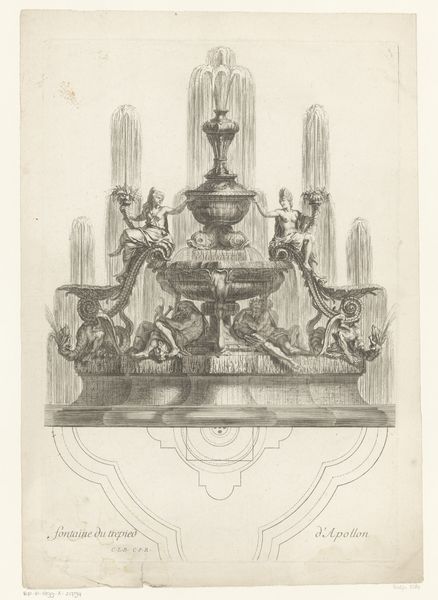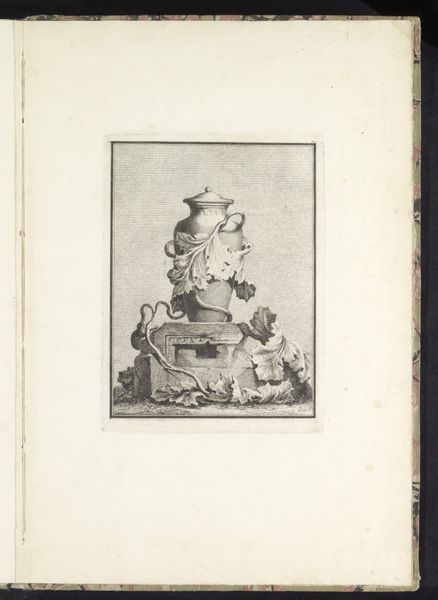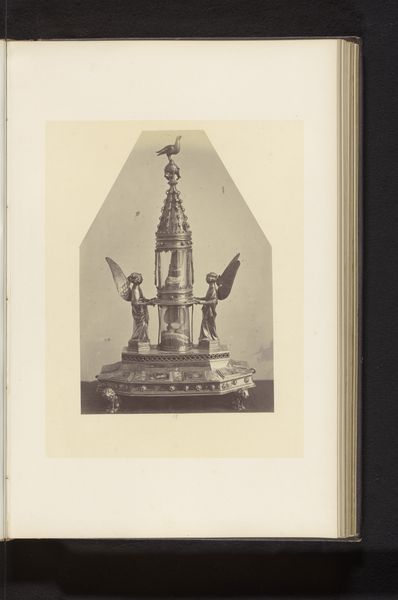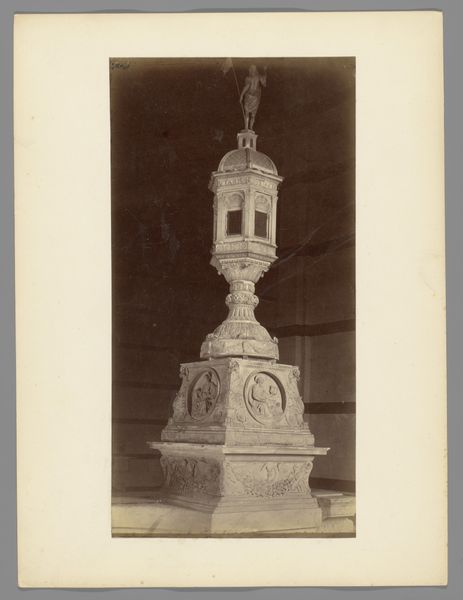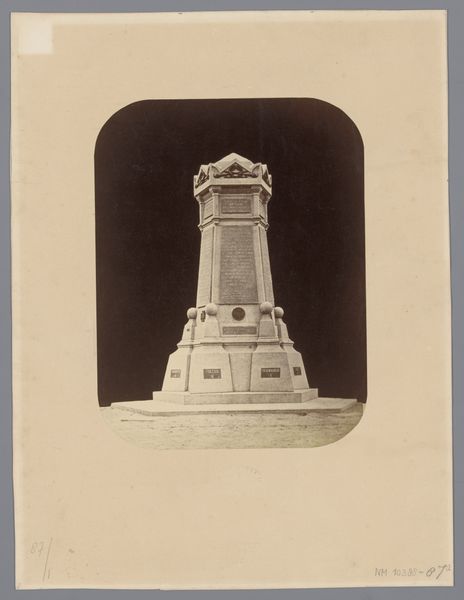
print, engraving, architecture
#
neoclacissism
# print
#
old engraving style
#
historical photography
#
19th century
#
cityscape
#
engraving
#
architecture
Dimensions: height 420 mm, width 510 mm
Copyright: Rijks Museum: Open Domain
Willem Charles Magnenat created this design for a monument in pen and grey ink around the period of 1830-1831. It was intended to celebrate the Volksgeest, or national spirit, during a tumultuous time of upheaval. This was a period of significant transition in Europe, when national identities were being asserted and re-defined, often in opposition to existing political structures. The design is layered with symbols – lions, busts and flowing water. Crowned by a female figure, perhaps representing liberty or the Dutch nation, the monument evokes ideas of power, purity, and historical legacy. The monument was designed for the Waterlooplein in Amsterdam. It exists today only as a drawing, yet it provides insight into the aspirations and values of the Dutch people at that time. It invites us to consider how nations construct and project their identities, and whose stories are included or excluded in those narratives. How might such a monument shape the identity of the space where it resides? What does it mean for the monument to exist only as a drawing?
Comments
No comments
Be the first to comment and join the conversation on the ultimate creative platform.
